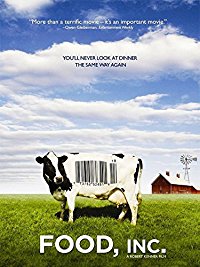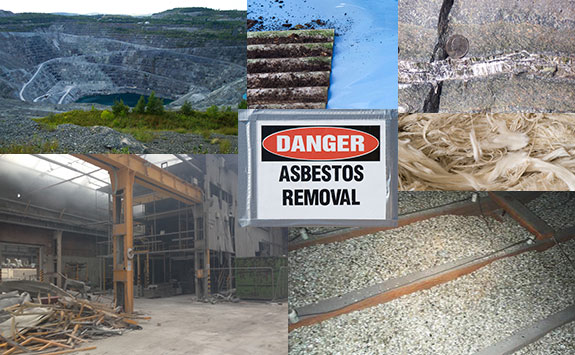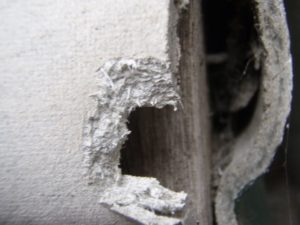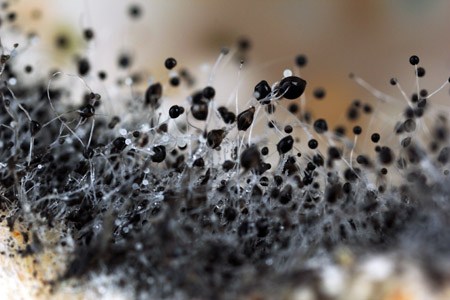16 Mar. 2018
Mold Risk Information For Homeowners in Spokane and North Idaho

9 Facts About Mold That You May Want To Know
Mold is everywhere. The Center for Disease Control estimates the existence of as many as three hundred thousand species. Molds thrive in both indoor and outdoor environments. Warmth and humidity, the very conditions preferred by humans, are ideal for their growth and proliferation. Molds surround us. Because they are so predominant in our environment, there are some basic facts about mold that everyone should know.
Long-term Exposure to Mold can be Fatal
Mold exposure can cause a multitude of health issues from mild allergies to death. Common symptoms include skin rashes, respiratory issues, and other ailments. Mold exposure has been linked to cold and flu-like symptoms as well as sinus infections and headache. More serious effects of long-term exposure include miscarriage and death in the very young, the elderly and immune compromised. If you suspect mold is growing in your home, a certified mold inspector can help you identify and eliminate the problem.
Bleach Does Not Kill Mold
Many homeowners mistakenly believe that bleach has the ability to kill mold. It does not. The mold will typically grow back within a few weeks of being sprayed. See our mold page for home inspection prices to protect your family’s health. Identification and treatment recommendations done by an independent inspector insure the best possible outcome for you and your family.
You Cannot Kill Mold by Painting Over It
Mold will grow back through paint, despite claims that certain paints are mold resistant or actually kill mold. Mold growth extends beneath surface areas where paint cannot penetrate. In a short amount of time (typically a few weeks), the paint will begin to crack or bubble, and the mold will soon re-establish its foothold. If you are having problems, have your home inspected for mold. We can recommend remediation companies or give recommendations for the DIY homeowner.
There are Over 100,000 Different Types of Mold
Yes, you read that right. One of the facts about mold you may not have known is exactly how much is out there. More than 100,000 known types of mold share the environment in which we live. Not all molds are found in our part of the world, not all types of mold are harmful, and many are beneficial. It may be impossible for an untrained person to determine the difference between beneficial and harmful molds. If you suspect molds may be causing problems, call the experts at EnviroConsulting Services.
Home-buyers Should Ask for a Mold Inspection
If you are shopping for a new home, or if you are a Realtor with a client who has questions about mold, call EnviroConsulting Services for a mold inspection. Homes reporting previous flooding or located within a designated floodplain should always be inspected. However, consider requesting a mold inspection no matter what the location or condition of the prospective purchase – even new construction can have harmful mold growth.
Insurance Policies Often Do Not Cover Mold
Check your insurance and homeowner’s policy and know the facts. Most typical insurance policies do not cover mold damage or even flood damage. Some insurance companies offer a mold rider. You may need a separate policy or be prepared to pay out of pocket should you find mold in your home.
Mold is Everywhere
Micro-spores of mold are everywhere. They surround us both indoors and out. Not all of those spores are harmful to us and others are harmful only in extremely high concentrations. Mold is in some of the foods we eat (bleu cheese). It has saved millions of lives (Penicillin). Many others exist without ever causing us harm. The problem arises when large amounts of specific spores colonize an area such as your home.
Mold in Your Home Means Moisture Intrusion
If you have found mold in your home, there is almost always an underlying cause. Moisture intrusion is occurring somewhere, even if it isn’t obvious. It could be a leak or a defect allowing rainwater to seep inside. It could have been from a flood or a simple hose drip or bad seal on your window. When you find mold, it is important to get rid of it. To keep the problem from reoccurring, it is equally important to find and remove the source of moisture.
Mold can Grow on Many Surfaces
Mold can grow on any organic or porous material under the proper conditions. While it cannot grow on non-porous surfaces such as glass, metals or concrete, it can absolutely grow on dust layers that may accumulate on those surfaces. Any home is full of surfaces that are conducive to mold growth.
Facts about Mold – Conclusion
These are 9 facts about mold that you may not have known. These basic facts can help you determine if mold may be an issue in your home. There is a lot that you can do to prevent serious growth and complications associated with mold. You don’t have to be an expert to understand this – but you do need an expert to successfully identify specific problems and assist in their remediation.
Written by: Farren Hauck, Susan Melka
quick links
Mold Illness and what happens to the body
How to recover from mold sickness once mold is remediated from your home
Internal links

26 Feb. 2018
Food Inc. Documentary on Food Production in America
Food Inc. Explained
Filmmaker Robert Kenner’s movie Food Inc. lifts the shroud from our nation’s food industry, exposing the highly mechanized food production systems that have been hidden from the American consumer with full consent of the U.S. Department of Agriculture and the Food and Drug Administration. Our nation’s food supply is now controlled by a handful of mega corporations that put profit ahead of consumer and worker safety, the health of our environment, and consumers, and the livelihood of the American farmer. Genetic modification has delivered insecticide resistant soybeans and herbicide resistant corn. Chickens with bigger breasts and perfect pork chops have been conjured by modern agribusiness along with tomatoes that keep forever on the shelf. These supposed advances, however, come at great cost we are experiencing an epidemic of obesity, particularly among young children, and skyrocketing levels of diabetes among adults. We also have new more virulent strains of e-coli, the harmful bacteria that infects 73,000 Americans annually.
While films of this kind are essential in exposing the offenses of the food industry, this documentary has a message of its own. It clearly advocates for locally grown and organic foods. The film expresses the idea that US agribusiness operates on a model similar to that of McDonald’s Restaurant principals of mass production. This industrialization of our agricultural production yields food that is unhealthy inhumane, and harmful to the only planet we call home. While higher standards of health and safety may help to reform our food industry, it is doubtful that self-regulation will encourage meaningful reform among corporate producers. Therefore, the ultimate responsibility to improve the overall production and quality of America’s food supply falls on the government. Reform is drastically needed in regulations and implementation, agricultural subsidies, and consumer education. Food Inc. very aptly illustrates the power of food industry lobbies in Washington DC and the difficulties we face in effecting positive policy change in the production of food in America.
Blog Text Provided by: Farren Hauck, Susan Melka
Link to watch Food Inc.
Food, Inc. (2008) | Watch Free
watchdocumentaries.com/food-inc/
Sep 7, 2008 – Uploaded by WatchDocumentaries.com
Watch Food, Inc. (2008) online. Documentary providing an insight into the American food industry and how …
Other Links
Who Monitors Our Food? | Schuster Institute for Investigative …
Movie Review – ‘Food, Inc.’: For Health Or Profit, But Not Necessarily …
Quick links to Website

23 Jan. 2018
Avoid Asbestos Exposure Get An Inspection Done Prior to Demolition
How Does Asbestos Exposure Happen
Asbestos exposure can be caused when asbestos fibers are be released into the air by the disturbance of Asbestos-Containing Material (ACM) examples include demolition work, building or home maintenance, repair, and remodeling. In general, asbestos exposure may occur only when the ACM is disturbed or damaged in some way to release asbestos particles and fibers into the air.
Health Effects From Asbestos Exposure
Exposure to asbestos increases your risk of developing lung disease, smoking greatly increases the risk. In general, the greater the exposure to asbestos, the greater the chance of developing harmful health effects. Disease symptoms may take many years to develop following exposure.
Asbestos-related conditions can be difficult to identify. Healthcare providers usually identify the possibility of asbestos exposure and related health conditions like lung disease by taking a thorough medical history. This includes looking at the person’s medical, work, cultural and environmental history.
When a doctor suspects an asbestos-related health condition, the physician can use many tools to help make the actual diagnosis. Some of these tools include physical examination, chest x-ray and pulmonary function tests. Your doctor may also refer you to a specialist who treats diseases caused by asbestos.
Three of the major health effects associated with asbestos exposure are:
- lung cancer
- asbestosis, a serious progressive, long-term, non-cancer disease of the lungs
- mesothelioma, a rare form of cancer that is found in the thin lining of the lung, chest and the abdomen and heart
For more information on these and other health effects of asbestos exposure see these websites
United States Environmental Protection Agency
Agency for Toxic Substances and Disease Registry
National Institute for Occupational Safety and Health NIOSH
Where Can I Find Asbestos
Asbestos is a mineral fiber that is a natural material that occurs in rock.
What Materials Contain Asbestos

Broken Wallboard
Because of its fiber strength and heat resistance asbestos it has been used in a wide variety of building construction materials for insulation and as a fire retardant for decades and still is being used. Asbestos has also been used in a wide range of manufactured goods, primarily in building materials (roofing shingles, ceiling and floor tiles, paper products, and asbestos cement products), friction products (automobile clutch, brake, and transmission parts), heat-resistant fabrics, packaging, gaskets, and coatings, for a more complete list.
Avoid Asbestos Exposure. Protect yourself and your family with an asbestos inspection before you remodel.
How Does Asbestos Exposure Happen
Asbestos exposure may occur when asbestos fibers are released into the environment by the disturbance of asbestos-containing material (ACM). While ACM is inert and poses little threat in most applications, activities such as demolition work, building or home maintenance, repair, and remodeling may disturb or damage ACMs, releasing dangerous particles and filaments and increasing risk of exposure to asbestos.
Health Effects From Asbestos Exposure
Exposure to asbestos increases your risk of developing lung disease and cancer. Generally, greater levels of exposure to asbestos equate to increased chances of developing these harmful health effects. Disease symptoms may take many years to develop following exposure, and these conditions can be difficult to identify.
Three of the major health effects associated with asbestos exposure are:
- Lung cancer
- Asbestosis, a serious progressive, long-term, non-cancer disease of the lungs
- Mesothelioma, a rare form of cancer that is found in the thin lining of the lung, chest and the abdomen and heart
For more information on these and other health effects of asbestos exposure see these websites
What is Vermiculite and What is the Concern
A mine near Libby, Montana, was the source for over 70 percent of all vermiculite sold in the United States from 1919 to 1990. Because at this mine there was also a deposit of asbestos with vermiculite from Libby was possibly contaminated with asbestos. The vermiculite from Libby was used in most of vermiculite insulation in the United States, was often sold under the brand name Zonolite. If you have vermiculite insulation in your home, you should assume this material may be contaminated with asbestos and be aware of steps you can take to protect yourself and your family from exposure to asbestos.
Why Call for an Asbestos Inspection Prior to Demolition
When considering a home remodel or commercial building renovation contact EnviroConsulting to have materials being disturbed tested to prevent asbestos exposure to workers. Our certified asbestos inspectors at EnviroConsulting can determine what materials should be tested prior to any demolition being done. We conduct preparatory initial inspections for all construction projects, to determine if an abatement is need.
Quick links to Website
Written by: Farren I Hauck, Susan Melka

17 Jan. 2018
Mold Risk Information For Homeowners in Spokane and North Idaho
9 Facts About Mold That You May Want To Know
Mold affects more people than you might think mold is everywhere, It surrounds us. In one way or another, mold affects everyone. You may even be exposed to it right now whether you know it or not. Because it is so predominant in our world, there are some basic facts about mold that everyone should know. Listed here are facts about mold that you may not know but should!
Long-term Exposure to Mold can be Fatal
Mold exposure can cause all sorts of health issues from mild allergies to death. Common symptoms include skin rashes, respiratory issues, reproductive issues and many more ailments have been linked back to mold. Mold exposure has been linked to cold and flu-like symptoms as well as sinus infections and headache. But it gets a lot more serious than that. In fact, long-term mold exposure has even been linked to pregnancy miscarriages and death in the very young, the elderly and immune compromised. If you suspect mold is growing in your home get your mold inspection and get your air tested for high concentrations of mold, by a certified mold inspector.
Bleach Does Not Kill Mold
Many home owners with the misconception that Bleach would kill and get rid of the mold in their homes. A lot of people see a bit of mold and immediately grab that bottle of bleach. Bleach does not kill mold. The mold will typically grow back within a few weeks of being sprayed. By this time, the homeowner may have forgotten about it or covered it up, see our mold page for home inspection prices to have your home inspected. Require that your mold testing to be done by a Third-Party thereby to avoiding any conflict of interest.
You Cannot Paint over Mold
Mold will grow back through paint, even though mold resistant paint or the paints that claim they kill mold. Mold is often deeper than what you can see with your eyes, and paint will not get rid of it. In a short amount of time (typically a few weeks), you will see the paint begin to crack or bubble, it is recommended that the appropriate action be taken. It is best to have your home inspected for mold and if you have problems we can recommend remediation companies or give recommendations for the DIY homeowner.
There are Over 100,000 Different Types of Mold
Yep, you read that right. One of the facts about mold you may not have known is exactly how much is out there. There are over 100,000 different types of mold in the world we live in. Not all molds live in our region of the world, not all types of mold are harmful, and some are even used for medicinal purposes. With so many different types of mold, it can be nearly impossible for the average person to know the difference between beneficial and harmful molds, that is why you should call the experts at EnviroConsulting Services.
Home buyers Should Ask for a Mold Inspection
If you are shopping for a new home, or you are a Realtor with a client who has questions about Mold, you should consider calling EnviroConsulting Services for a mold inspection. If the home has reported previous flooding or is in a floodplain, this is even more important. However, you should consider requesting a mold inspection no matter what type of house you are looking to purchase. Even brand-new construction can have mold growth present.
Insurance Policies Often Do Not Cover Mold
Always check with your insurance and homeowner’s policy and know the facts. Most of the time, your typical insurance policy does not cover mold damage or even flood damage, some insurance companies offer a mold rider it is recommended you check with your homeowners insurance to see if you can attach a mold rider. You may need a separate policy or be prepared to pay out of pocket should you find mold in your home.
Mold is Everywhere
Micro-spores of mold are everywhere. Literally everywhere. One of the facts about mold you may not know is that it surrounds us both indoors and outdoors it is alive in our environment everyday. But not all of those spores are harmful to us, others are not harmful unless they are in numbers of high concentration in your home. We eat some of them (bleu cheese for example). We use some of them in medicine (Penicillin). Many others exist without ever causing us harm. The problem arises when large amounts of spores actively grow in one area such as your home.
Mold in Your Home Means Moisture Intrusion
If you have found mold in your home, there is almost always an underlying cause. Moisture intrusion is occurring somewhere, even if it isn’t obvious. It could be a leak or a defect allowing rainwater to seep inside. It could have been from a flood or a simple hose drip or bad seal on your window. When you find mold, it is important to get rid of it. But if you don’t want it coming back, it is equally important to find the source of moisture and remedy it.
Mold can Grow on Many Surfaces
Mold can grow on any organic or porous material when the conditions are right. While it cannot grow on non-porous surfaces such as glass, metals or concrete, it can absolutely grow on dust layers that may accumulate on those surfaces. Your home is full of surfaces that mold can take hold on and grow.
Facts about Mold – Conclusion
These are 9 facts about mold that you may not have known. Please use this basic knowledge about mold to be better aware of its presence and impact in your life. There is a lot that you can do to prevent serious growth and complications associated with mold. You don’t have to be an expert to make a difference.
However, because there is so much to learn about mold, it is impossible to know everything without specific education on the topic. For this reason, mold remediation is best left to the experts who have been specifically trained on mold growth and removal. If you suspect mold is growing in your home, seek out an expert.
quick links
